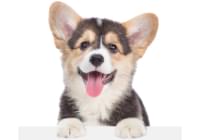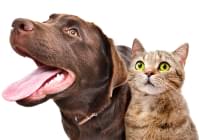Fat Cats
Obesity A Danger For Cats, Too
Michael W. Stephan, D.V.M.
Juno Beach Animal Hospital
In the past few weeks we have talked about nutrition problems in birds and dogs. Like dogs, the most common nutrition problem in cats tends to be obesity. As in other species, obesity in cats can lead to other, more serious diseases. Because cats are such finicky eaters and because their bodies react differently from other animals, getting them to lose weight must be done slowly and carefully.
By far, the greatest complication for a cat who is overweight is diabetes. Owners will usually notice a sudden weight loss, increased drinking and urinating, and decreased energy and activity levels. If your cat is primarily an outdoor cat, you may not notice the changes in drinking and urinating. Very obese cats tend to have very low activity levels, so reduced activity is sometimes hard to recognize, even when it happens with an indoor cat. If you notice any of these changes in your cat, a simple blood test can be done to determine the blood sugar level.
As in other animals, injections of insulin can be given to help control diabetes. It can be difficult to get them regulated and determine the proper dose of insulin to give, and some cats may require hospitalization for a couple of days to get them started. Caring for a diabetic cat requires a significant commitment on the part of the owner. In the first month or so of therapy, blood glucose tests will have to be done on a regular basis until control is achieved. Once controlled, insulin will usually have to be given twice a day, on a regular schedule. If you are going to be away over night, or for vacation, you will need to make arrangements for someone to give the insulin injections for you.
It is also best for diabetic cats to be switched to a high fiber diet. Hills/Science Diet w/d is one of the most common foods used. It is also easiest to control the blood sugar levels and insulin requirements if you can get your cat to eat regular meals. Some cats will not take to changes in their diets very well and this must be watched closely. Overweight cats who stop eating or are deprived of food may develop fatty changes in their liver which are fatal if not treated.
As with other diseases we have discussed in this space, prevention of obesity is better than the treatment of obesity. Establish good eating habits for your kitten and stick with them through adulthood. Be especially careful if you have more than one cat in your household. We will often see a situation where a single cat dominates the food dish and the other cat is only allowed to eat after the dominant cat is finished. If you attempt to cut back the amount of food you are leaving out in this situation, the fat, dominant cat will usually get fatter and your thin cat will lose even more weight. If this is the case, you may have to make a gradual change to a lower calorie dry food left in the dish, and separate the cats for a short period once or twice a day to provide some canned cat food for the thinner cat. Again, be sure the heavier cat continues eating to avoid the liver changes we discussed earlier.
Exercise can also help in weight reduction, but getting a cat to participate in regular exercise can be difficult. Some cats enjoy walking with their owners. Purchase a sturdy, reliable harness before taking them outdoors. Other cats will enjoy a set period of exercise playing with toys with their owner. Starting with toys containing catnip may spark the interest in an otherwise indifferent cat. You will have an easier time establishing these behaviors in your kitten, than trying to convert him or her as an adult cat.
Prevention of obesity will help to ensure a longer healthier life for your beloved companion. If you have a cat who is already overweight, see your veterinarian for help in establishing a program to shed those extra pounds. Both you and your cat will appreciate the benefits of a healthy lifestyle.





